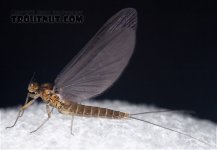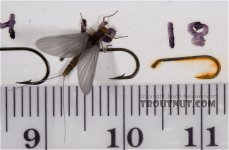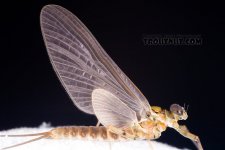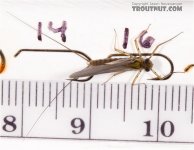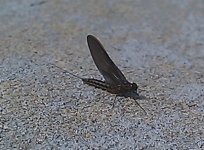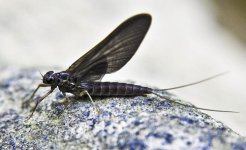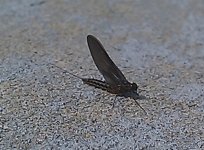Tuesday was a very interesting day on a central PA limestone river. Cooler by about 20 degrees, it rained virtually all day off and on, mostly a light rain. By noon there were a variety of olives on the water. Some may have been Acerpenna--if they hatch this early in the season. They were tiny and had some yellow-orange in the bodies.
There were many others as well, all ranging from about a size 22 to a size 26, some with grey wings, some about a size 22 with black wings. The fish seemed to be keying on these latter bugs, which were more visible at least to me, and seemed to be more plentiful. Anyway, I caught fish on a parachute emerger with a black post. I'm wondering if the black winged olives might be Acentrella--the bug formerly known as Pseudocloen. Someone a few years back identified these bugs to me as Pseudocloen, but I'm not at all sure he was right.
The only black-winged olives I can find in Knopp and Cormier (yes, I know it's an imperfect reference--but it's the most detailed Mayfly book I own) are Baetis brunneicolor, which they list as both a western and eastern species, but only describe the western species as having black wings. They give Acentrella turbida the common name of "little slate-winged brown quill" but I think of slate wings as darker grey, not black.
Finally, I'd like some help on a very mean fish. He was eating olives--I'm not sure which ones, or at what stage of emergence--right in front of me. I threw several patterns at him, and had I not been shaking with the cold I might have tried a few more. (I finally left for the warmth of the car's heater and some more cooperative fish downstream.) The only thing that got a nod was a sunken soft hackle, but he refused that also after giving it brief consideration. What would you have thrown at him?
I copied the above from: http://www.troutnut.com/specimen/641

